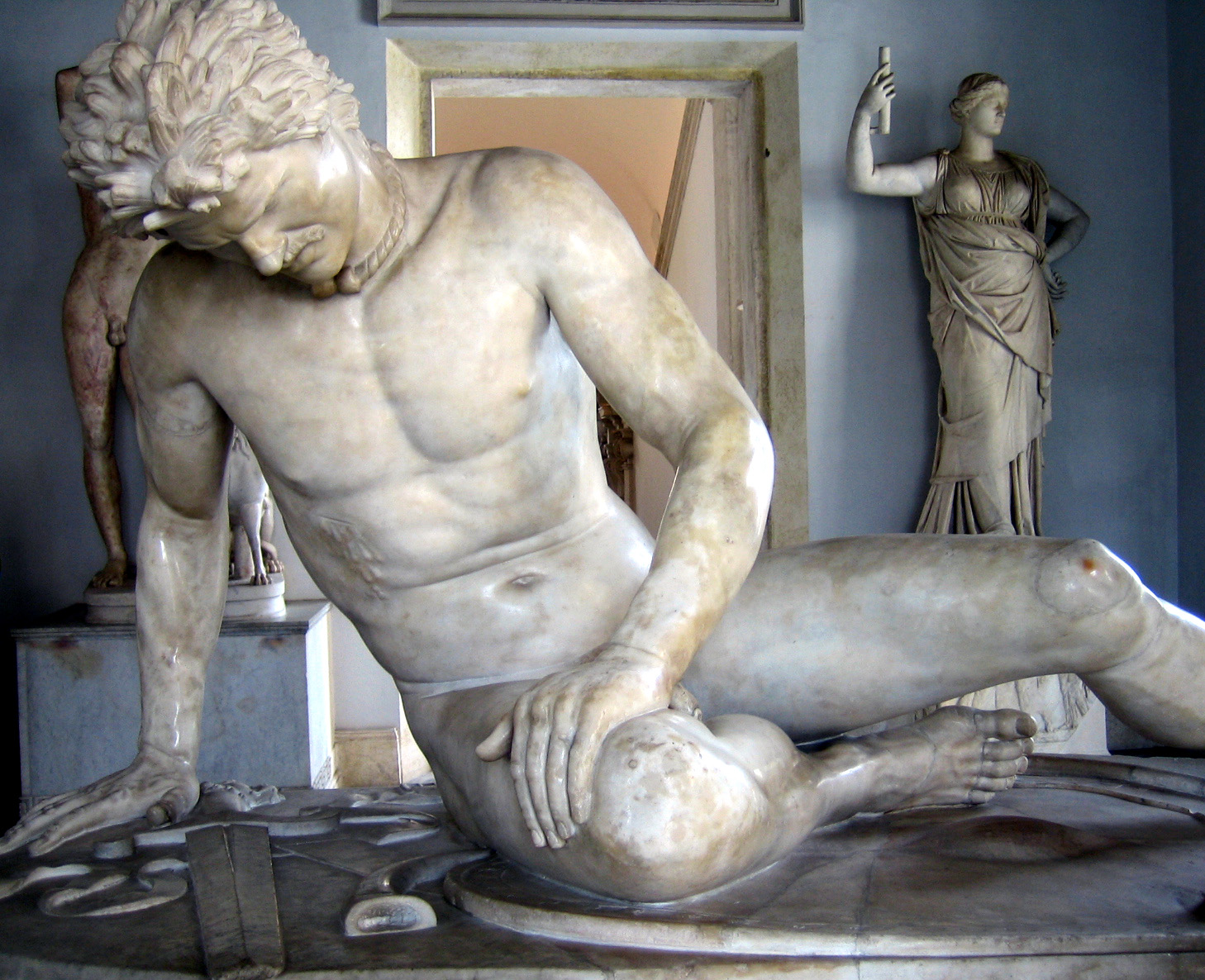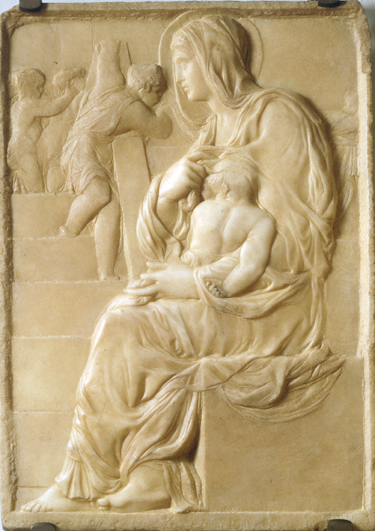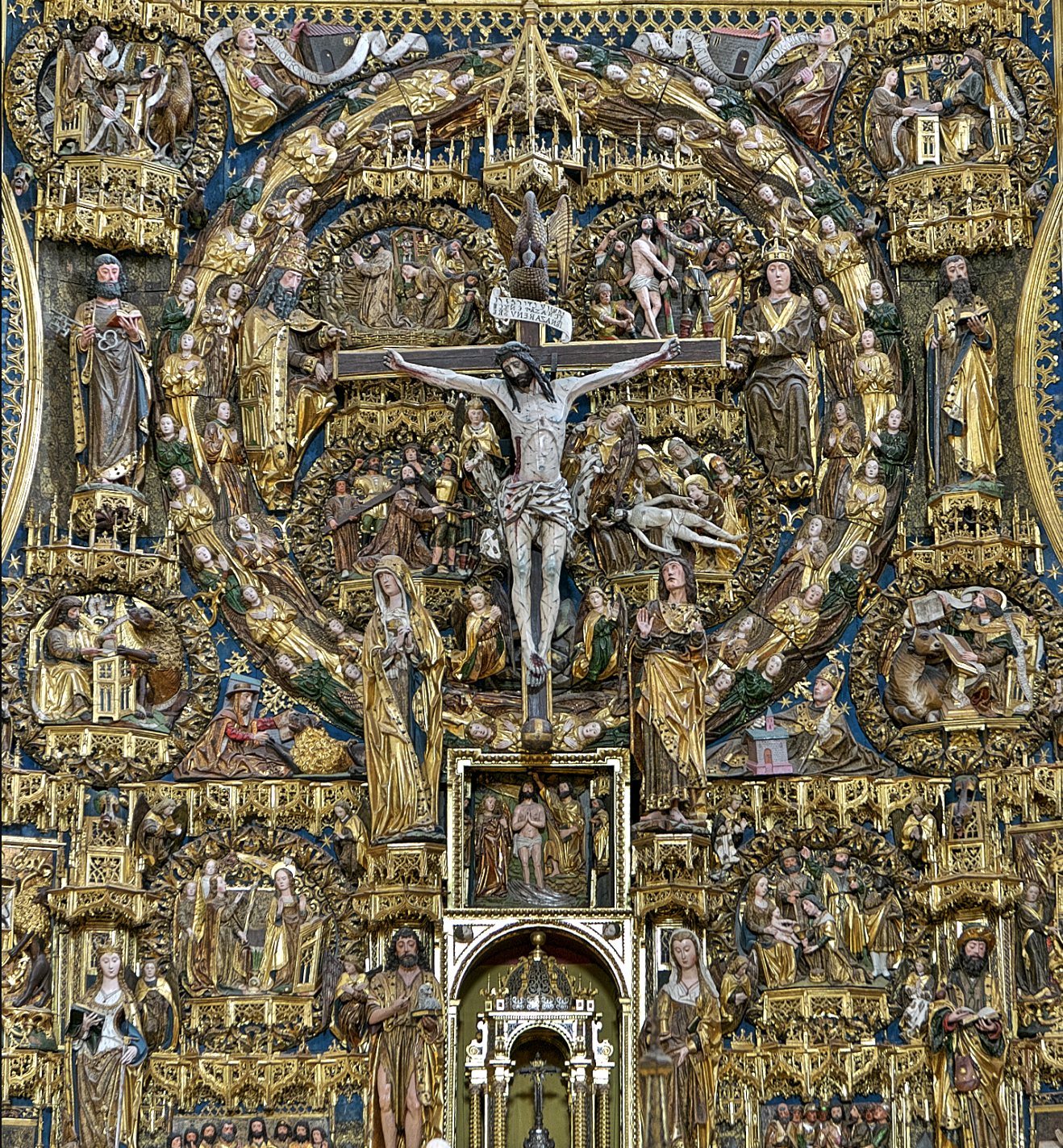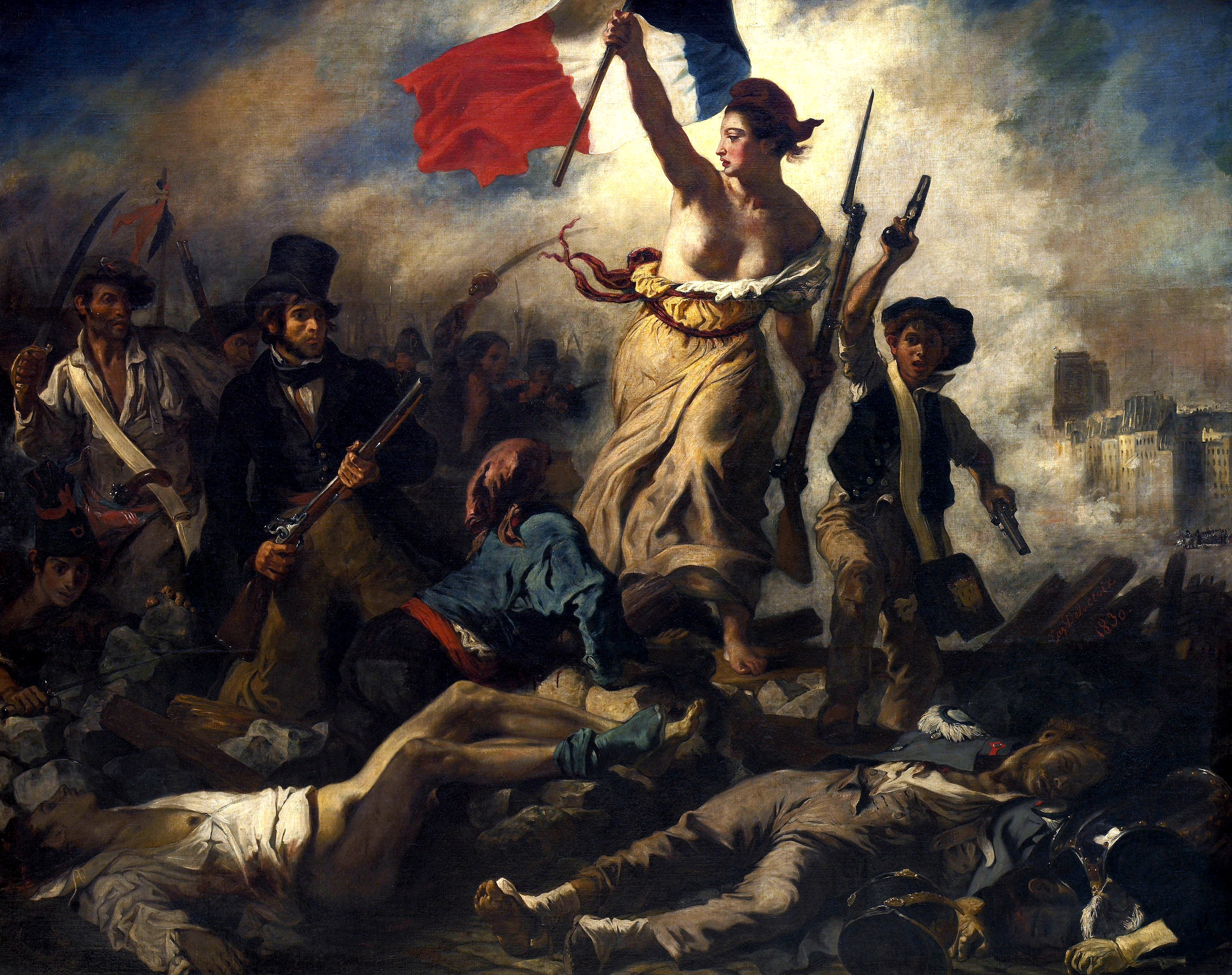|
Sculptor
Sculpture is the branch of the visual arts that operates in three dimensions. Sculpture is the three-dimensional art work which is physically presented in the dimensions of height, width and depth. It is one of the plastic arts. Durable sculptural processes originally used carving (the removal of material) and modelling (the addition of material, as clay), in stone, metal, ceramics, wood and other materials but, since Modernism, there has been an almost complete freedom of materials and process. A wide variety of materials may be worked by removal such as carving, assembled by welding or modelling, or moulded or cast. Sculpture in stone survives far better than works of art in perishable materials, and often represents the majority of the surviving works (other than pottery) from ancient cultures, though conversely traditions of sculpture in wood may have vanished almost entirely. However, most ancient sculpture was brightly painted, and this has been lost. [...More Info...] [...Related Items...] OR: [Wikipedia] [Google] [Baidu] |
Michelangelo
Michelangelo di Lodovico Buonarroti Simoni (; 6 March 1475 – 18 February 1564), known as Michelangelo (), was an Italian sculptor, painter, architect, and poet of the High Renaissance. Born in the Republic of Florence, his work was inspired by models from classical antiquity and had a lasting influence on Western art. Michelangelo's creative abilities and mastery in a range of artistic arenas define him as an archetypal Renaissance man, along with his rival and elder contemporary, Leonardo da Vinci. Given the sheer volume of surviving correspondence, sketches, and reminiscences, Michelangelo is one of the best-documented artists of the 16th century. He was lauded by contemporary biographers as the most accomplished artist of his era. Michelangelo achieved fame early; two of his best-known works, the '' Pietà'' and ''David'', were sculpted before the age of thirty. Although he did not consider himself a painter, Michelangelo created two of the most influential fresc ... [...More Info...] [...Related Items...] OR: [Wikipedia] [Google] [Baidu] |
Assemblage (art)
Assemblage is an artistic form or medium usually created on a defined substrate that consists of three-dimensional elements projecting out of or from the substrate. It is similar to collage, a two-dimensional medium. It is part of the visual arts and it typically uses found objects, but is not limited to these materials. History The origin of the art form dates to the cubist constructions of Pablo Picasso c. 1912–1914. The origin of the word (in its artistic sense) can be traced back to the early 1950s, when Jean Dubuffet created a series of collages of butterfly wings, which he titled ''assemblages d'empreintes''. However, Marcel Duchamp, Pablo Picasso and others had been working with found objects for many years prior to Dubuffet. Russian artist Vladimir Tatlin created his "counter-reliefs" in the mid 1910s. Alongside Tatlin, the earliest woman artist to try her hand at assemblage was Elsa von Freytag-Loringhoven, the Dada Baroness. In Paris in the 1920s Alexander Calder, ... [...More Info...] [...Related Items...] OR: [Wikipedia] [Google] [Baidu] |
Gothic Sculpture
Gothic sculpture was a sculpture style that flourished in Europe during the Middle Ages, from about mid-12th century to the 16th century,The chronology of the period varies significantly according to the source consulted evolving from Romanesque sculpture and dissolving into Renaissance sculpture and Mannerism."Gothic art" In: '' Online'' When the classical values started to be appreciated again in the , the sculpt ... [...More Info...] [...Related Items...] OR: [Wikipedia] [Google] [Baidu] |
Alto-relievo
Relief is a sculptural method in which the sculpted pieces are bonded to a solid background of the same material. The term ''relief'' is from the Latin verb ''relevo'', to raise. To create a sculpture in relief is to give the impression that the sculpted material has been raised above the background plane. When a relief is carved into a flat surface of stone (relief sculpture) or wood (relief carving), the field is actually lowered, leaving the unsculpted areas seeming higher. The approach requires a lot of chiselling away of the background, which takes a long time. On the other hand, a relief saves forming the rear of a subject, and is less fragile and more securely fixed than a sculpture in the round, especially one of a standing figure where the ankles are a potential weak point, particularly in stone. In other materials such as metal, clay, plaster stucco, ceramics or papier-mâché the form can be simply added to or raised up from the background. Monumental bronze reliefs ... [...More Info...] [...Related Items...] OR: [Wikipedia] [Google] [Baidu] |
Bas-relief
Relief is a sculptural method in which the sculpted pieces are bonded to a solid background of the same material. The term '' relief'' is from the Latin verb ''relevo'', to raise. To create a sculpture in relief is to give the impression that the sculpted material has been raised above the background plane. When a relief is carved into a flat surface of stone (relief sculpture) or wood ( relief carving), the field is actually lowered, leaving the unsculpted areas seeming higher. The approach requires a lot of chiselling away of the background, which takes a long time. On the other hand, a relief saves forming the rear of a subject, and is less fragile and more securely fixed than a sculpture in the round, especially one of a standing figure where the ankles are a potential weak point, particularly in stone. In other materials such as metal, clay, plaster stucco, ceramics or papier-mâché the form can be simply added to or raised up from the background. Monumental bronze relief ... [...More Info...] [...Related Items...] OR: [Wikipedia] [Google] [Baidu] |
Modernism
Modernism is both a philosophical and arts movement that arose from broad transformations in Western society during the late 19th and early 20th centuries. The movement reflected a desire for the creation of new forms of art, philosophy, and social organization which reflected the newly emerging industrial world, including features such as urbanization, architecture, new technologies, and war. Artists attempted to depart from traditional forms of art, which they considered outdated or obsolete. The poet Ezra Pound's 1934 injunction to "Make it New" was the touchstone of the movement's approach. Modernist innovations included abstract art, the stream-of-consciousness novel, montage cinema, atonal and twelve-tone music, divisionist painting and modern architecture. Modernism explicitly rejected the ideology of realism and made use of the works of the past by the employment of reprise, incorporation, rewriting, recapitulation, revision and parody. Modernism also rej ... [...More Info...] [...Related Items...] OR: [Wikipedia] [Google] [Baidu] |
Visual Arts
The visual arts are Art#Forms, genres, media, and styles, art forms such as painting, drawing, printmaking, sculpture, ceramics (art), ceramics, photography, video, filmmaking, design, crafts and architecture. Many artistic disciplines such as performing arts, conceptual art, and textile arts also involve aspects of visual arts as well as arts of other types. Also included within the visual arts are the applied arts such as industrial design, graphic design, fashion design, interior design and decorative art. Current usage of the term "visual arts" includes fine art as well as the applied art, applied or decorative arts and crafts, but this was not always the case. Before the Arts and Crafts Movement in United Kingdom, Britain and elsewhere at the turn of the 20th century, the term 'artist' had for some centuries often been restricted to a person working in the fine arts (such as painting, sculpture, or printmaking) and not the decorative arts, craft, or applied Visual arts med ... [...More Info...] [...Related Items...] OR: [Wikipedia] [Google] [Baidu] |
Renaissance
The Renaissance ( , ) , from , with the same meanings. is a period in European history marking the transition from the Middle Ages to modernity and covering the 15th and 16th centuries, characterized by an effort to revive and surpass ideas and achievements of classical antiquity. It occurred after the Crisis of the Late Middle Ages and was associated with great social change. In addition to the standard periodization, proponents of a "long Renaissance" may put its beginning in the 14th century and its end in the 17th century. The traditional view focuses more on the early modern aspects of the Renaissance and argues that it was a break from the past, but many historians today focus more on its medieval aspects and argue that it was an extension of the Middle Ages. However, the beginnings of the period – the early Renaissance of the 15th century and the Italian Proto-Renaissance from around 1250 or 1300 – overlap considerably with the Late Middle Ages, conventi ... [...More Info...] [...Related Items...] OR: [Wikipedia] [Google] [Baidu] |
Ceramic Art
Ceramic art is art made from ceramic materials, including clay. It may take forms including artistic pottery, including tableware, tiles, figurines and other sculpture. As one of the plastic arts, ceramic art is one of the visual arts. While some ceramics are considered fine art, such as pottery or sculpture, most are considered to be decorative, industrial or applied art objects. Ceramics may also be considered artefacts in archaeology. Ceramic art can be made by one person or by a group of people. In a pottery or ceramic factory, a group of people design, manufacture and decorate the art ware. Products from a pottery are sometimes referred to as "art pottery". In a one-person pottery studio, ceramists or potters produce studio pottery. The word "ceramics" comes from the Greek ''keramikos'' (κεραμεικός), meaning "pottery", which in turn comes from ''keramos'' (κέραμος) meaning "potter's clay". Most traditional ceramic products were made ... [...More Info...] [...Related Items...] OR: [Wikipedia] [Google] [Baidu] |
David (Michelangelo)
''David'' is a masterpiece of Renaissance sculpture, created in marble between 1501 and 1504 by the Italian artist Michelangelo. ''David'' is a marble statue of the Biblical figure David, a favoured subject in the art of Florence. ''David'' was originally commissioned as one of a series of statues of prophets to be positioned along the roofline of the east end of Florence Cathedral, but was instead placed in a public square, outside the Palazzo Vecchio, the seat of civic government in Florence, in the Piazza della Signoria, where it was unveiled on 8 September 1504. The statue was moved to the Galleria dell'Accademia, Florence, in 1873, and later replaced at the original location by a replica. Because of the nature of the figure it represented, the statue soon came to symbolize the defence of civil liberties embodied in the Republic of Florence, an independent city-state threatened on all sides by more powerful rival states and by the hegemony of the Medici family. The ey ... [...More Info...] [...Related Items...] OR: [Wikipedia] [Google] [Baidu] |
Moses San Pietro In Vincoli
Moses hbo, מֹשֶׁה, Mōše; also known as Moshe or Moshe Rabbeinu (Mishnaic Hebrew: מֹשֶׁה רַבֵּינוּ, ); syr, ܡܘܫܐ, Mūše; ar, موسى, Mūsā; grc, Mωϋσῆς, Mōÿsēs () is considered the most important prophet in Judaism and one of the most important prophets in Christianity, Islam, the Druze faith, the Baháʼí Faith and other Abrahamic religions. According to both the Bible and the Quran, Moses was the leader of the Israelites and lawgiver to whom the authorship, or "acquisition from heaven", of the Torah (the first five books of the Bible) is attributed. According to the Book of Exodus, Moses was born in a time when his people, the Israelites, an enslaved minority, were increasing in population and, as a result, the Egyptian Pharaoh worried that they might ally themselves with Egypt's enemies. Moses' Hebrew mother, Jochebed, secretly hid him when Pharaoh ordered all newborn Hebrew boys to be killed in order to reduce the population ... [...More Info...] [...Related Items...] OR: [Wikipedia] [Google] [Baidu] |


%2C_1897_F.jpg)


.jpg)



